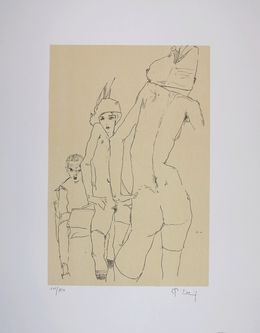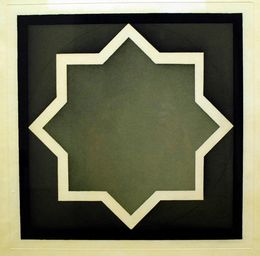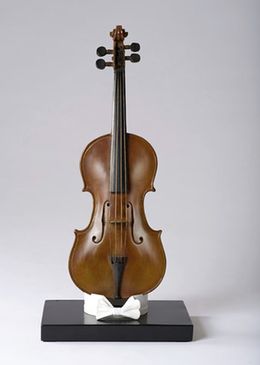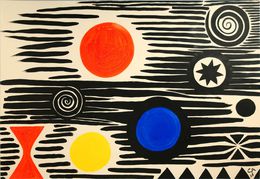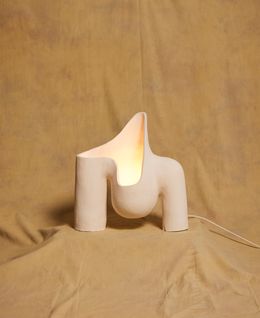
Meet Hervé Descottes




Top left: portrait of Hervé Descottes © Photo Studio Dubuisson; Hervé Descottes projects, top right: Kiasma Museum of Contemporary Art, Helsinki © Benoit Pevelli, bottom right: LUMA Arles, Arles © Hervé Descottes, bottom left: Les Lalanne exhibition at the Musée des Arts Décoratifs, Paris © Manolo Yllera courtesy Peter Marino Architect
Hervé Descottes is a French lighting designer and founder of the lighting design firm L'Observatoire International based in New York and France. He is the author of Ultimate Lighting Design, and has worked on numerous large scale projects around the globe, some of which include the Louvre and Fondation Louis Vuitton in Paris, and the High Line in NYC. Join us as we chat with Hervé about his career so far, his experience working in various creative places, and his dream design project!
1. Hello Hervé! Thank you for taking the time to chat with us. Could you tell us a bit about how you started your lighting design studio? What made you choose New York as a base?
In 1993, I was already involved in lighting design in France and was fortunate enough to be a part of the renovation of the Richelieu Wing when I. M. Pei was designing the pyramid of the Louvre, and supervising the renovation of galleries inside the museum. When the ministry moved to Bercy, the supervision was ensured by Jean Michel Wilmotte and under the direction of I. M. Pei. It then became a collaboration between an American and French team. Not long after, I moved from the province to Paris. I wanted more, and American culture was cooler and open-minded. When I arrived in the early 1990s, I felt the city was for me. It was more rock n roll, challenging and had great energy. The modernity was appealing and there were a lot of great architects that inspired me, such as Richard Meier, Steven Holl, Philip Johnson, Frank Gehry… So I called their office with my tiny portfolio of institutional projects and some good ideas. It wasn't easy but NYC is the crossroads of every path. It is a constant river of ideas and creativity.
2. You have worked on various major international projects. Is there one project in your career that you feel has particularly marked or influenced your practice in some way?
A project is like a child. It's impossible to have a favorite child. Each has its own unique journey full of amazing, long-term collaborations. For instance, I have been working with Steven Holl for a long time, but always with a different mindset. It was an incredible journey working on the Chapel of St. Ignatius in Washington. We talked a lot about abstract art, abstract lighting, and invisible and visible light. We also recently finished the Museum of Fine Arts in Houston (MFAH). Another longstanding relationship I have is with one of my mentors, Frank Gehry. We've collaborated on many wonderful iconic projects together such as LUMA Arles, Fondation Louis Vuitton, Disney Concert Hall among many others.
Another significant project for me is the High Line in NYC, which was a 12-year-long project. The idea of the project is to hide the light sources, and never be blinded by any of them, as if you could see the stars in the sky while walking on a carpet of light. You are already above light pollution, inside a canyon of buildings.


Hervé Descottes projects, on the left: Chapel of St. Ignatius, Seattle © Liao Yusheng, on the right: The High Line, New York © Halkin Mason Photography
3. You have worked with renowned museums and art galleries. How did you manage to enhance the artworks while maintaining their integrity?
Working on art displays, galleries and exhibitions requires maximum honesty in the setting. The light level in a museum is a tenth of that of a gallery. The brighter you make it, the better it will look, but it will lessen the lifespan of the artworks. It is very important to consider these technical restrictions in order to reveal each artwork and its differences in the space. Light is the key to creating uniformity, and creating the right balance between the art and its spatial context. Our work is to create this subtle dialogue. With a private gallery, it is slightly different as there is a commercial aspect, so we have to choreograph. The display method can be more theatrical, such as the project we did with the Guild Gallery or Hauser and Wirth.
4. A large aspect of your practice is to work with and enhance the relationship between space, architecture and emotion. Does finding this balance come naturally to you, or is it something that you have developed throughout your career?
I've always had a natural instinct, but have developed and refined it throughout my career. I've learned to tune and harmonize different light sources to bring out emotions and moods - almost like if walls could talk. Great ideas also come from not having knowledge. If you know too much, you can restrict yourself from the possibilities and dreams you can achieve. I don't want technical restrictions to alter the emotions. It is about finding a balance. Rather than lighting the space, I integrate light into the space.
5. You recently shared a work by Caravaggio on your Instagram account. Does inspiration from the fine arts often find its way into your design practice? If so, are there any artists that have particularly impacted you?
Absolutely, the Great Masters brought light into their paintings in different ways. Caravaggio is the master of theatrical lighting with big contrasts, but I am also inspired by George de La Tour, who is a master in hiding light sources in order to reveal emotions, as well as Dutch painters such as Vermeer. I was lucky enough to work for the Louvre, and be inside during the closing hours of the museum. It was a magical experience. Another big inspiration for me is Bob Wilson, who brought light to his shows. I was a fan of the great cinematographer Henri Alekan - when I was young I bought a book by him that triggered a lot of ideas about the importance of light in a camera, but also in our everyday life.


Hervé Descottes projects, on the left: Hauser & Wirth Gallery, Zurich © Hauser & Wirth, on the right: Guild Gallery, New York © Adrian Gaut
6. You have given many lectures throughout your career. If you could share one piece of design advice for an aspiring lighting designer, what would it be?
The most important thing is to follow your heart and how you feel. A bad project is one where we can notice that a lighting designer worked on it. A good project is one where you can feel the light, not see it.
7. Finally, if you could work on your dream design project with no constraints, what and where would it be?
My dream project would be lighting a base on the moon. I would like to explore the possibilities of what type of lighting elements humans would need on the moon.

Selección de obras de arte
